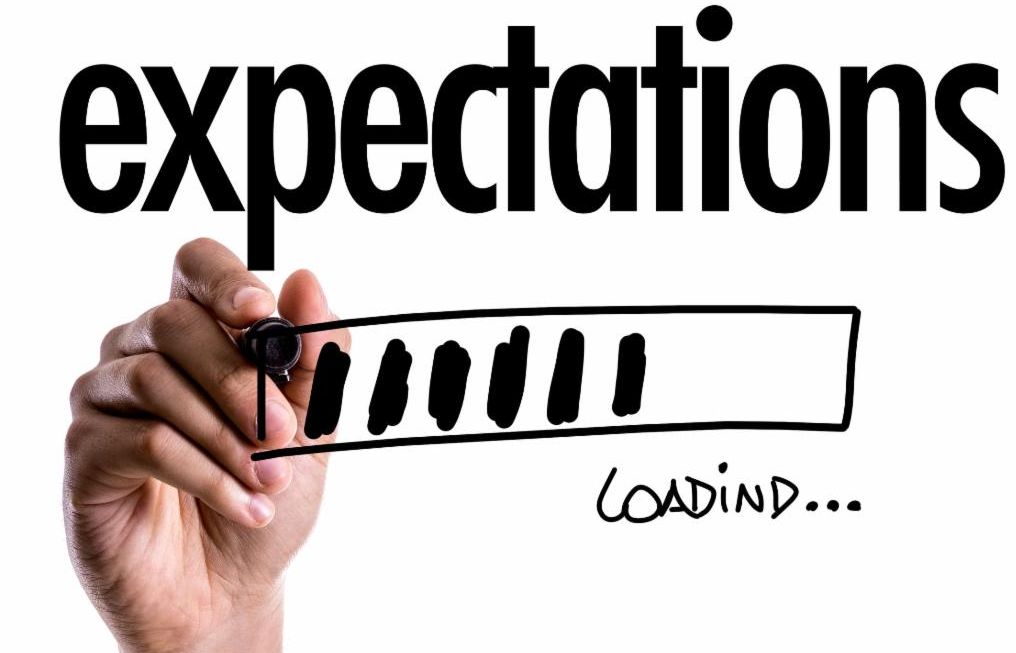When describing what influences the behavior of individuals as they pursue their lives, you would likely include concepts associated with goals, plans, passion, desire, ego, personality, etc. In matters of human interaction as we meet, love, and work together, there is often an abiding struggle between my passion and your ego, for example, or your goals and my plans. Indeed, successful long-term personal relationships are heavily weighted on my tolerance of you today and your forbearance of me tomorrow. Give and take. And the world goes round.

But in the marketplace, affection and sentiment give way to contracts and performance, because tolerance and forbearance are always subjective, often inefficient, and sometimes unproductive. Consequently, a very powerful concept developed over the millennia that is the nucleus of how marketplace participants minimize conflict and find common ground. In classically efficient marketplace style, I’ve reduced this concept to one word: expectations.
For example, the most important thing for you to know about someone with whom you’re negotiating a contract is that party’s expectations – especially that one, true, uncompromising expectation, beyond which they won’t go. But nowhere is the quest for expectation clarity more urgent than between Seller and Customer. Because the quicker a Customer’s expectations of value and values can be determined, the closer the Seller is to fulfilling those expectations and making the sale.
For 10,000 years, during what I call “The Age of the Seller,” Customer expectations were fulfilled by consumption which was driven by innovation. New stuff was produced and delivered by Sellers to Customers who eagerly anticipated “New and Improved.” Think of all the things Customers acquired for the first time in the last century: cars, appliances, radios, televisions, personal computers, and iPods, just to name a few.
But today, in what I’ve named “The Age of the Customer,” things are different. Customer expectations are now about empowerment from two aspects: 1) they expect to discover most of what they need to know on their own, without talking to a Seller; and 2) Customers don’t worries much about whether they can get what they want, at a price they’re willing to pay, from dozens of places made of either bricks or clicks. This is the shift of a 10,000-year paradigm, and it’s unprecedented in the history of the marketplace
Rather than breathlessly awaiting the next generation product, today Customers are more likely to get excited about a new mobile app that helps them find, review, compare, pay for, and take delivery of what they want or need. Increasingly, Customers are eliminating Sellers here, at the relevance level, before they’ve made any appraisal of classic competitiveness: price, quality, selection, availability, service, etc.
This will be on the test: In The Age of the Customer, relevance trumps competitiveness. Any questions?
Make no mistake – being competitive is still essential. No one is going to pay more than something is worth. But before Customers know about competitiveness, they appraise relevance, then choose which of the two most relevant finalists is the most competitive to deliver the product. And here’s the scary part: All of this may be – likely will be – done before any Seller knows the prospect exists. Your phone ringing less than it used to is the sound of a paradigm shift.
Being competitive was the coin of the realm for thousands of years; today it’s merely table stakes. In The Age of The Customer, relevance is a Customer’s prime expectation. The new paradigm.
Write this on a rock … Buckle up for this: Since this new paradigm is a child of the Digital Age, expectation fulfillment now happens at what I call The Moment of Relevance. Literally, in seconds. Maybe just one.
